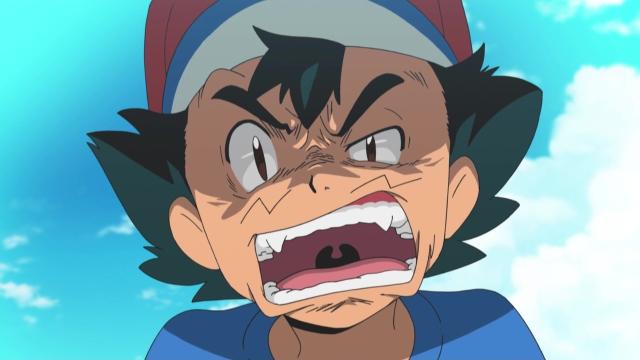Now that we’ve all seen the trailer for the first live-action Pokémon movie, it feels like it’s time to voice some…concerns about some of the newer pocketable monsters Nintendo’s been stealthily incorporating into its games for the past few years.
To put it simply: Nintendo’s been trying to pass off Digimon as Pokémon and it’s time for the treachery to end.
It’s not that Nintendo has ever literally tried to pass off one of Bandai’s Digimon as a Pokémon, but rather, the more recent generation of games have introduced new monsters that, to people familiar with the Digimon franchise, come off as being more digital monster than pocket monster.
Ever since the public first learned about the Johto Region and the fact that Nintendo pretty much always planned to unveil more Pokémon than the original 150, there has been a vocal contingent of fans insisting that the new additions simply don’t qualify as “real” Pokémon. It’s easy enough to understand where that feeling comes from, given the significant impact that the Pokémon franchise had on the collective childhood of the ‘90s.
But while people might not like the monsters Nintendo’s rolled out after the first generation, the point stands that they’re the creatures the company has decided to immortalise across its video games, television shows, and films.
That being said, it’s difficult to deny that, post-Red/Blue/Green/Yellow, something changed about the kinds of Pokémon that Nintendo was willing to put its stamp of approval on. And while a great deal of them are absolutely delightful (Empoleon and Aegislash come to mind), many of them are…well, questionable because they don’t exactly look like Pokémon.
The Pokémon franchise we know today wouldn’t exist without Ken Sugimori, the video game designer who created each and every single one of the original generation’s monsters, including Mew. In each of the original 151’s designs, Sugimori’s artistic sensibilities and quirky sense of humour are readily apparent.
Take, for instance, Voltorb and Electrode, two monsters who are basically just knockoff Pokéballs with faces. There’s a cheekiness to the simplicity of their designs, made all the more chuckle-worthy by the fact that their only real method of attacking is to self-destruct, knocking themselves out in the process. Of course, there are plenty of other first gen Pokémon with more intricate designs, like Mr. Mime and Mewtwo, but again, their looks all feel part of a cohesive overall aesthetic that defined the earliest video game and trading cards.
But, as the Pokémon franchise has grown over the years, the task of coming up with and illustrating new Pokémon has become a team effort. While Sugimori is still very involved in the process of finalising new monsters, many of the ideas for them begin with other artists who have, let’s say…different tastes.
It’s impossible to look at Pokémon like Lucario, Blaziken, and Gallade and not be reminded of the monsters from Bandai’s Digimon franchise, in part because of how human-like the creatures are. While most Pokémon feel distinctly inspired by and reflective of actual animals (and inanimate objects, sometimes), there was always a kind of heightened, fantastical nature to Digimon because they, put simply, are digital facsimiles of real things.
Each stage of a Digimon’s evolution from its Fresh level (when they’re usually blobs) to its final form becomes increasingly complex and more video game-like. What begins as a simple dinosaur can end up becoming a jousting warrior riding a huge bird-like hoverboard through the sky.
While Pokémon hasn’t quite gone that far off the rails just yet, it’s gotten pretty damned close, especially with the introduction of Ultra Beasts, Pokémon from another dimension that first appeared in Pokémon Sun and Pokémon Moon. There’s a concept behind each that isn’t all that difficult to make sense of, but their aesthetics make them all feel more like battle-hardened monstrosities–as opposed to the kinds of monsters young children would be carrying around in their pockets.
Of course, the inclusion of these newer, less traditional Pokémon doesn’t at all detract from the presence of their more staid peers, but as Nintendo continues to branch out into the wild, new world of live-action productions, it’s going to be weird if the company insists on creating monsters that straight-up look like they don’t belong in the real world.
